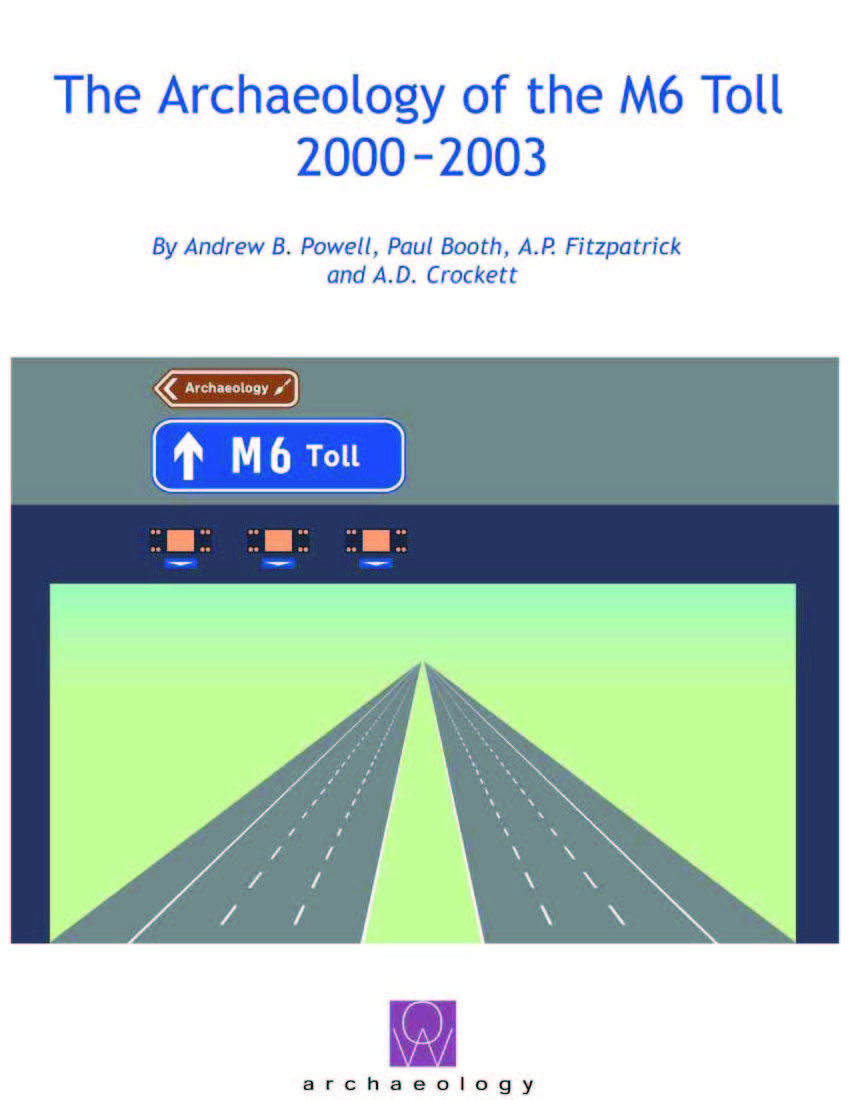The Archaeology of the M6 Toll 2000 - 2003
Andrew B. Powell, Paul Booth, A. P. Fitzpatrick & A. D. Crockett

Description
In late 2000, during one of the wettest winters on record, Oxford Wessex Archaeology were commissioned by the construction consortium CAMBBA, on behalf of Midland Expressway Limited, to carry out the archaeological works associated with the construction of the new 44km M6 Toll motorway. The main phase of work was carried out during 2001, and by 2003 all investigations were complete, revealing 41 separate sites.
Remains included Mesolithic flint scatters, isolated Neolithic pits and hollows, Bronze Age burnt mounds and Iron Age settlement enclosures. The Romano-British period was dominated by settlement and burials concentrated around Wall (Letocetum), Ryknield Street and Watling Street, whilst the Anglo-Saxons were notable by their absence from the results. Evidence for medieval settlement and agriculture was recorded at many sites, including a Knights Templar fishpond complex at Wishaw. More recent standing structures were also recorded, including the northern dam for Hatherton Reservoir, Churchbridge Railway and Accommodation bridges and sections through the Cannock Extension and Wyrley and Essington Canals, vital elements of the post-medieval industrial heritage of the region.
Details
| Published | Published By | Pages | ISBN | ||||||||||||||||||||||||||||||||||||||||||||||||||||||||||||||||||||||||||||||||||||||||||||||||
|---|---|---|---|---|---|---|---|---|---|---|---|---|---|---|---|---|---|---|---|---|---|---|---|---|---|---|---|---|---|---|---|---|---|---|---|---|---|---|---|---|---|---|---|---|---|---|---|---|---|---|---|---|---|---|---|---|---|---|---|---|---|---|---|---|---|---|---|---|---|---|---|---|---|---|---|---|---|---|---|---|---|---|---|---|---|---|---|---|---|---|---|---|---|---|---|---|---|---|---|
| Jan. 1, 2008 | Oxford Wessex Archaeology | 625 | 978-0-9545970-1-6 | ||||||||||||||||||||||||||||||||||||||||||||||||||||||||||||||||||||||||||||||||||||||||||||||||
| License Information | |||||||||||||||||||||||||||||||||||||||||||||||||||||||||||||||||||||||||||||||||||||||||||||||||||
| Copyright © Wessex Archaeology. This work is openly licensed via CC BY-NC-ND 4.0 | |||||||||||||||||||||||||||||||||||||||||||||||||||||||||||||||||||||||||||||||||||||||||||||||||||
